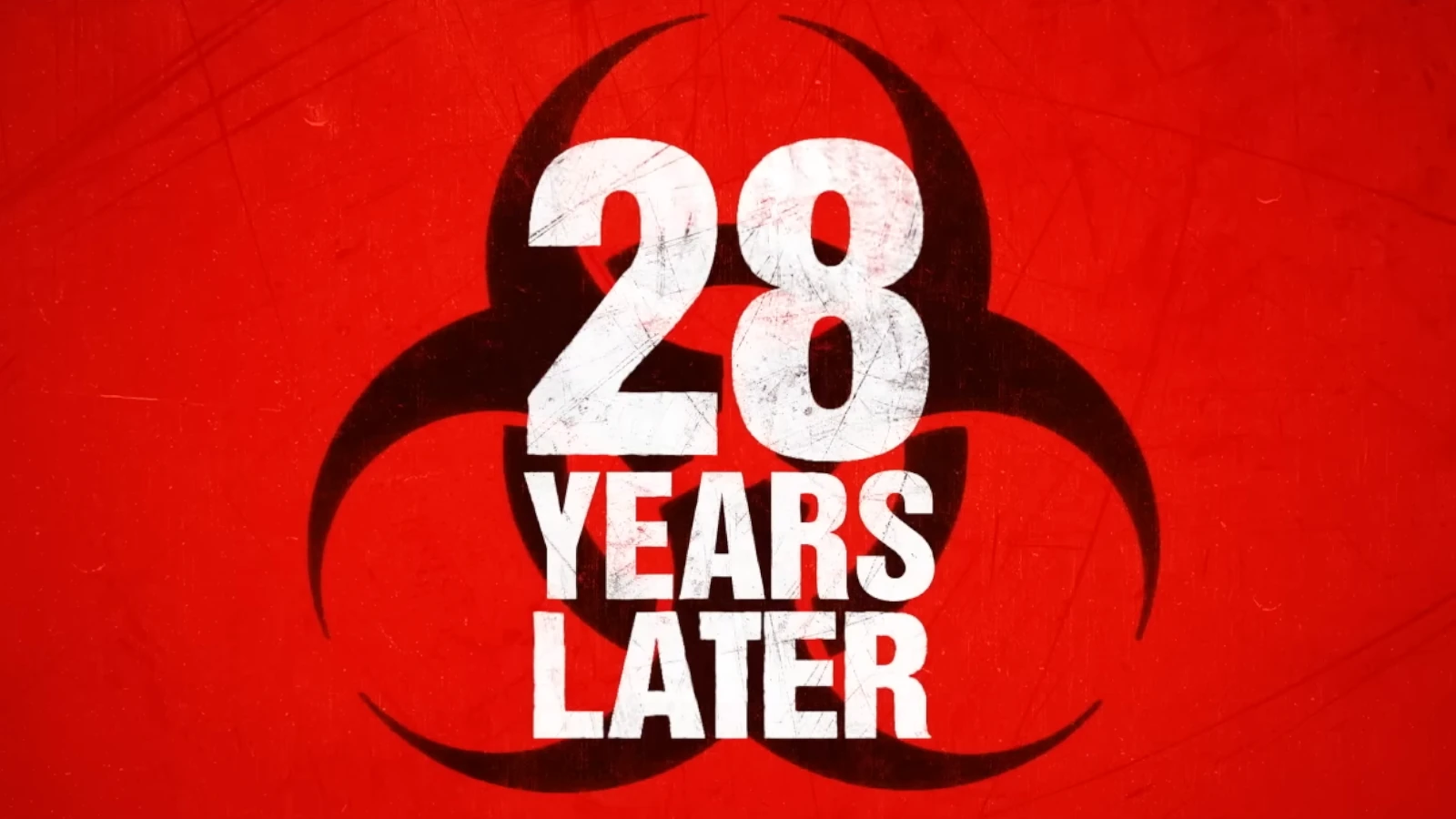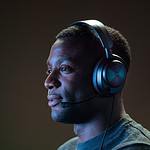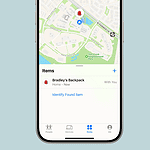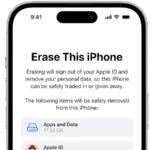Danny Boyle is once again disrupting the filmmaking world. For his upcoming sequel 28 Years Later, the acclaimed director made an audacious choice: the entire movie was shot on the iPhone 15 Pro Max. It’s not a marketing stunt—it’s a bold artistic decision that echoes Boyle’s long history of embracing unconventional technology to enhance storytelling. And it may just mark a turning point in how big-budget films get made.
The Legacy of Low-Fi Innovation
This isn’t Boyle’s first time opting for unusual equipment. Back in 2002, 28 Days Later was shot using the Canon XL-1, a standard-definition digital camcorder. That decision gave the film a gritty, documentary-style edge that helped redefine the modern zombie genre. Fast forward to 2025, and 28 Years Later takes that spirit even further with a $75 million film shot on smartphones.
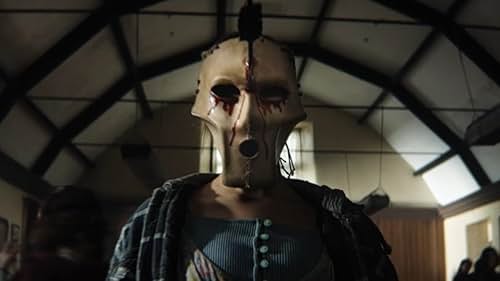
Cinematographer Anthony Dod Mantle, Boyle’s longtime collaborator and an Oscar winner for Slumdog Millionaire, returns to bring his experimental sensibilities to the project. Mantle helped pioneer the digital cinematography movement, and his involvement gives the iPhone decision instant credibility.
Not Just a Phone—A Filmmaking Rig
The production didn’t simply point and shoot with iPhones straight out of the box. The team outfitted the iPhone 15 Pro Max with custom cinema-grade rigs. These included professional anamorphic lenses, depth-of-field adapters, and stabilization gear—turning a consumer device into a legitimate cinema camera.
According to Apple’s tech specs, the iPhone 15 Pro Max supports ProRes Log video and external recording via USB-C—features previously only found in high-end digital cinema cameras. That gave Mantle the flexibility to color-grade and fine-tune the look of the footage during post-production, ensuring it could meet the visual demands of a major release.
Why Use an iPhone at All?
So why shoot on a smartphone when you have $75 million to spend? For one, the form factor allows for dynamic, intimate shots in tight locations—a staple of the 28 Days franchise. Boyle has always favored handheld camera work to create a sense of immediacy and chaos, and the iPhone’s portability is perfect for that.
Moreover, the smartphone setup likely sped up production. Lightweight rigs mean faster setups, less crew congestion, and greater mobility, particularly for on-location shoots. It also opens up possibilities for more natural lighting, as iPhones handle low-light scenes surprisingly well with Apple’s computational photography smarts.
A Trend Bigger Than One Film
Boyle isn’t alone in exploring smartphone filmmaking. Sean Baker’s Tangerine (2015) made waves at Sundance after being shot on an iPhone 5S, and Steven Soderbergh has used iPhones for Unsane and High Flying Bird. But 28 Years Later is the first major genre sequel—and the first tentpole zombie film—to fully commit to the format.
With advancements in mobile camera tech and AI-assisted post-processing, more filmmakers are reconsidering what’s possible outside the traditional camera ecosystem. Companies like Moment, Beastgrip, and SmallRig now cater to professionals using smartphones, making this kind of setup increasingly viable.
Big Names, Small Cameras
Don’t mistake the iPhone decision as a budget-saving tactic. With a $75 million budget and a cast that includes Jodie Comer, Aaron Taylor-Johnson, and Ralph Fiennes, 28 Years Later is very much a prestige production. The iPhone is simply a new brush in Boyle’s creative toolkit—one that lets him return to the urgency and realism that made the original films so haunting.
Ultimately, this move reflects a shift in how we define “cinema.” It’s not just about the gear—it’s about the story, the style, and the intent. If Danny Boyle can use a phone to deliver blockbuster-level horror, maybe the line between indie experimentation and mainstream spectacle is finally blurring for good.
Key Takeaways
- “28 Years Later” was filmed on modified iPhone 15 devices equipped with professional cinema lenses and specialized rigs.
- This zombie sequel joins a growing list of professional films shot on smartphones, but is the first major horror franchise to use this approach.
- The iPhone filming technique likely offered unique advantages for capturing the movie’s intense zombie action sequences in challenging environments.
Innovative Cinematography with iPhone 15 Pro Max
Danny Boyle’s zombie sequel takes smartphone filmmaking to unprecedented heights by using custom-rigged iPhone 15 Pro Max devices paired with professional cinema equipment. This bold choice created both technical hurdles and unique creative opportunities.
Challenges and Solutions
Filming “28 Years Later” with the iPhone 15 Pro Max required clever workarounds to overcome the smartphone’s limitations. The production team attached high-end full-frame DSLR lenses to the phones using custom rigs worth thousands of dollars. This setup allowed them to achieve the cinematic look while maintaining the iPhone’s mobility advantages.
Lighting posed another major challenge. The crew used professional lighting equipment similar to traditional film sets to compensate for the iPhone’s smaller sensor size. This combination created the film’s distinctive visual style.
The sound recording happened separately with professional audio equipment. In post-production, extensive color grading helped match footage from different iPhone units and enhanced the atmospheric horror elements that fans expect from the franchise.
Comparing Camera Technologies
The iPhone 15 Pro Max offers several advantages over traditional cinema cameras. Its compact size let Boyle’s team shoot in tight spaces and capture unique angles impossible with bulkier equipment. The phone’s weight—a fraction of standard movie cameras—allowed for more dynamic handheld sequences.
However, traditional cinema cameras still outperform in low-light conditions and dynamic range. To address this gap, the 28 Years Later team shot in optimal lighting conditions when possible and used professional lighting gear to control shadows and highlights.
The iPhone’s 4K capability proved sufficient for theatrical release quality, though it required more careful shot planning. One unexpected benefit: the production saved considerable money on camera rental fees, redirecting those funds to other aspects of filmmaking.
The Evolution of Smartphone Filmmaking
Mobile phones have transformed from simple calling devices to powerful filmmaking tools used by both amateurs and professional directors. This shift has opened new creative possibilities and changed how stories can be told on screen.
Historical Achievements
The journey of smartphone filmmaking began with early experiments around 2010. In 2011, Park Chan-wook shot “Night Fishing” on an iPhone 4, winning the Golden Bear for Short Film at the Berlin International Film Festival. This marked one of the first major recognitions for mobile filmmaking.
Sean Baker’s “Tangerine” (2015) was a breakthrough moment, shot entirely on iPhone 5S devices with special anamorphic adapters. The film received critical acclaim at Sundance and proved smartphones could create theatrical-quality features.
Steven Soderbergh pushed boundaries further by shooting “Unsane” (2018) and “High Flying Bird” (2019) on iPhones. He praised the format for allowing intimate camera placements and faster shooting schedules.
Danny Boyle’s choice to film 28 Years Later on an iPhone 15 continues this evolution. Working with cinematographer Anthony Dod Mantle, Boyle used specialized rigs and professional lenses while keeping the iPhone sensor as the capture device.
Industry Recognition
Major film festivals now include categories specifically for mobile-shot films. The iPhone Film Festival and Mobile Motion Film Festival showcase exclusively smartphone-created content, giving a platform to this growing medium.
The Academy of Motion Picture Arts and Sciences has recognized smartphone-shot films in various categories, though none have won major awards yet. Industry experts predict this barrier will fall within the next decade.
Film schools have added smartphone filmmaking to their curricula, teaching students how to maximize these accessible tools. This democratization has allowed more diverse voices to enter filmmaking without expensive equipment barriers.
Cinematographers like Anthony Dod Mantle, who previously shot 28 Days Later with Boyle, have embraced smartphones as valid artistic tools rather than mere compromises. Many professionals now use phones for certain shots even in traditionally-filmed productions.
Production Insights
The filming of “28 Years Later” broke new ground in movie production through innovative use of consumer technology. Director Danny Boyle’s bold choice to use the iPhone 15 Pro Max created unique challenges and opportunities for the cast and crew.
Shooting Techniques
Danny Boyle employed several creative approaches to maximize the iPhone 15 Pro Max’s capabilities. The film crew used specialized rigs and gimbals to stabilize the phone during action sequences. These lightweight setups allowed for more fluid movement in tight spaces that traditional camera equipment couldn’t access.
Cillian Murphy and the cast had to adjust to the iPhone’s less intimidating presence. This smaller camera created a more intimate atmosphere on set. The crew also attached special lenses to the iPhone to achieve cinematic looks typically associated with Hollywood productions.
Lighting techniques were modified for the iPhone’s sensors. The team used natural light when possible and small, portable LED panels for night scenes. This approach gave the film its raw, authentic feel while maintaining professional quality.
Post-Production Methods
After filming wrapped in August, the production team moved to an extensive post-production process. The iPhone footage required specific color grading techniques to match the visual style of previous films in the series.
Editors used professional software like Final Cut Pro and DaVinci Resolve to enhance the iPhone footage. They applied custom filters to create the gritty aesthetic the zombie apocalypse genre demands.
Sound design presented unique challenges. The iPhone’s built-in microphones weren’t used for production audio. Instead, the crew recorded separate high-quality sound that was carefully synchronized during editing.
Visual effects teams had to adapt their workflows for the iPhone’s 4K footage. They created zombie effects and enhanced action sequences while working with the different color profile and dynamic range of the iPhone camera compared to traditional film cameras.
Cast and Crew Perspectives
The filming of “28 Years Later” on iPhone 15 created unique challenges and opportunities for the talented team behind this highly anticipated horror sequel. Both actors and filmmakers had to adapt their techniques to this innovative approach.
Lead Actors’ Experiences
Cillian Murphy, returning to the franchise after two decades, found the iPhone filming process surprisingly intimate. “The camera was less intrusive than traditional equipment,” he noted during a set visit.
Jodie Comer embraced the mobility that iPhone filming allowed. She could move more naturally without waiting for complex camera setups. This freedom helped her stay in character during intense scenes.
Aaron Taylor-Johnson mentioned how the iPhone filming approach created a raw, authentic feel. “It brought us back to the gritty roots of the original film,” he said.
Ralph Fiennes was initially skeptical but quickly became a fan of the method. “The small camera gets into spaces traditional cameras can’t,” he explained. This helped create the claustrophobic feeling the story needed.
Director’s Vision
Danny Boyle’s choice to film with iPhone 15 wasn’t just about budget – it was an artistic decision. “We wanted to capture that same urgent energy that made the first film special,” Boyle explained.
The director worked closely with cinematographers to add special lenses to the iPhones. These additions helped achieve the film’s distinctive look while maintaining mobility.
Boyle insisted cast and crew sign NDAs to keep the iPhone filming secret until post-production. He wanted audiences to judge the final product on its own merits.
Despite the $75 million budget, Boyle felt the iPhone approach kept the team nimble. “We could film anywhere, anytime. That spontaneity shows on screen,” he said.
Legal and Ethical Considerations
Filming a major movie like “28 Years Later” on iPhones raised several important legal and contractual issues that the production team needed to address before and during filming.
Non-Disclosure Agreements (NDA)
The production of “28 Years Later” required strict NDAs from everyone involved in the project. These legal documents prevented cast and crew from revealing details about the iPhone filming techniques.
Apple likely demanded these agreements to protect their proprietary technology. The company provided special adapted iPhone 15 Pro Max devices that weren’t yet available to the public.
The NDAs covered specific technical modifications made to the phones. These included custom lens attachments and specialized filming apps.
Crew members couldn’t share photos of the equipment on social media. The agreements also banned discussion of any technical problems that occurred during filming.
Breaking an NDA could result in serious financial penalties. The production company made sure everyone understood these consequences before joining the project.
Actor Consent and Contracts
Actors in “28 Years Later” signed special contracts that included clauses about iPhone filming. These contracts needed to address how footage would be used beyond the initial film release.
The lightweight nature of iPhone cameras allowed for more intimate filming. This required clear consent from performers about close-up shots and unexpected filming moments.
Contract terms specified:
- Rights to behind-the-scenes iPhone footage
- Approval for promotional materials showing filming techniques
- Compensation for any Apple-related marketing
Many actors were excited about the innovative filming approach. However, some veterans needed reassurance about image quality and how they would appear on screen.
The production team created sample footage to show actors how they would look when filmed on iPhones. This helped ease concerns and secure full consent from the entire cast.
Marketing and Distribution Strategies
The marketing for “28 Years Later” heavily leveraged its iPhone 15 filming technique as a unique selling point. This innovative approach became central to both digital campaigns and box office strategies.
Digital Platforms and Promotions
Apple partnered with the film’s marketing team to highlight the groundbreaking use of the iPhone 15 Pro Max in creating a major horror sequel. Social media campaigns featured behind-the-scenes footage showing director Danny Boyle working with the adapted smartphones on set.
The film’s trailer explicitly mentioned the iPhone connection, creating buzz among both film enthusiasts and tech fans. Online forums quickly filled with discussions about this production choice, with some viewers expressing surprise at the professional quality achieved.
Tech publications featured interviews with the cinematography team explaining the custom lens adapters and specialized apps used during filming. This technical angle generated free publicity through tech blogs and YouTube channels.
Box Office and Revenue
The unique filming method created a distinctive marketing angle that helped the film stand out in a crowded release schedule. Early box office projections suggested the innovation story helped attract viewers curious about the visual quality.
Some theater chains promoted special screenings highlighting the “shot on iPhone” aspect with technical demonstrations before showings. This created premium ticketing opportunities at select venues.
Critics noted that the lower production costs associated with iPhone filming potentially increased profit margins. Though the exact budget savings weren’t disclosed, industry analysts estimated significant reductions in camera equipment expenses.
The film’s financial performance demonstrated that audiences were receptive to professionally made content shot on consumer devices. This may influence future production decisions for mid-budget films seeking cost efficiency without sacrificing visual quality.
Privacy and Data Protection Policies
During the filming of “28 Years Later” on iPhone 15 Pro Max devices, the production team implemented strict privacy protocols to protect sensitive footage and personal data. Apple’s security features played a key role in safeguarding the project from leaks.
Handling of Personal Data
The production of 28 Years Later required careful management of personal data from cast and crew. Each iPhone used for filming had custom security settings to protect footage and prevent unauthorized access.
The team used Apple’s built-in authentication features, including Face ID and passcodes, to ensure only authorized personnel could access the devices. This was especially important since the phones contained unreleased footage worth millions.
IP addresses and location data were carefully managed. The production disabled automatic cloud uploads to prevent any footage from leaving the physical devices without explicit permission.
Security measures included:
- Regular security audits
- Restricted network access
- Custom profiles limiting app installations
- Physical device tracking
Cookie Use and User Preferences
For the behind-the-scenes content shared online, the production team developed a privacy-focused approach to user data. They created a custom website for sharing production updates that limited cookie collection.
The site offered clear privacy settings for fans, allowing them to opt out of data collection. This aligned with Apple’s privacy stance, though ironically, Apple has recently faced challenges with their Advanced Data Protection in the UK.
The production avoided personalized advertising based on user data. Instead, they focused on context-based promotion that didn’t require extensive data collection.
User search data was anonymized when collected for content measurement and audience research. The team’s privacy policy clearly explained what information was gathered and how it would be used to improve services.
Technology Trends and Future Outlook
Mobile filmmaking technology has rapidly evolved, transforming how movies are made and who can make them. The success of “28 Years Later” with iPhone technology signals major shifts in the film industry.
Advancements in Mobile Filmmaking
The use of iPhone 15 Pro Max for filming “28 Years Later” isn’t just a one-off publicity stunt—it represents a significant shift in filmmaking technology. Since Sean Baker shot “Tangerine” on iPhone 5s and Steven Soderbergh embraced iPhone filmmaking, the technology has improved dramatically.
Today’s smartphones offer 4K video capabilities with improved low-light performance, making them viable for professional projects. The iPhone 15 Pro used on “28 Years Later” was heavily modified with:
- Custom lens adapters
- Professional cinema lenses
- Specialized rigs and gimbals
- Professional audio equipment
These modifications allowed the $1,200 phone to function like equipment worth tens of thousands of dollars. At CES this year, several companies showcased new mobile filmmaking accessories, signaling growing industry support.
Predictions for the Industry
Hollywood is watching this trend closely. If a $75 million zombie blockbuster can be shot on iPhone, what does this mean for future productions? Industry experts predict several outcomes:
First, more mid-budget films may adopt smartphone cinematography to reduce costs. This could lead to more creative risk-taking as financial barriers lower.
Second, film schools are likely to shift curriculum to include mobile filmmaking techniques. Students can learn core principles without expensive equipment.
Finally, camera manufacturers like Arri and RED will likely respond with more compact, affordable options to compete with enhanced smartphone capabilities.
The gap between professional and consumer equipment continues to shrink. While traditional cameras still offer advantages, the success of “28 Years Later” proves that storytelling matters more than the tools used to capture it.
Cultural and Social Impact
The filming of “28 Years Later” on iPhone devices marks a turning point in cinema production, challenging traditional filmmaking norms and opening doors to new creative approaches.
Influence on Aspiring Filmmakers
The news that “28 Years Later” was filmed using adapted iPhone 15s has excited many young filmmakers. This choice by director Danny Boyle shows that high-quality movies don’t always need expensive camera gear.
Many film students and indie directors now see smartphone filmmaking as a real option. The success of a major zombie movie shot on phones helps break down barriers to entry in the film industry.
When a big-budget film starring Jodie Comer, Ralph Fiennes, and Aaron Taylor-Johnson can be shot on tricked-out iPhones, it proves that storytelling matters more than equipment.
Film schools have started adding smartphone cinematography classes to their programs. Online communities sharing iPhone filming tips have grown since the news broke.
Drama Genre and Narrative Innovation
The zombie drama genre gets fresh life through this filming approach. The iPhone cameras likely give “28 Years Later” a raw, immediate feeling that fits perfectly with its post-apocalyptic London setting.
This technical choice mirrors the original “28 Days Later,” which used early digital cameras to create its distinctive look. The iPhone filming method continues this tradition of using new technology to enhance storytelling.
The smaller camera setup allows filming in tight spaces and unusual angles that might be impossible with standard movie cameras. This helps create the claustrophobic feeling needed in zombie horror films.
When principal filming wrapped in August, few knew about the iPhone connection. This secrecy suggests the filmmakers wanted the movie to stand on its storytelling merits first.
Reader Engagement and Interaction
The filming of “28 Years Later” on iPhone has sparked incredible interest among fans and aspiring filmmakers alike, creating numerous opportunities for engagement. Both user-generated content and digital platform interactions have helped build a community around this innovative filmmaking approach.
User-Generated Content
Fans have created remarkable content inspired by Danny Boyle’s iPhone filmmaking technique. Many amateur filmmakers have uploaded their own iPhone-shot horror clips mimicking the “28 Years Later” visual style.
Some fans have shared detailed breakdowns of the film’s techniques on YouTube, pointing out how the enormous lenses attached to the iPhone created the movie’s distinctive look. These videos often include side-by-side comparisons with the original “28 Days Later.”
According to audience research, these user videos gain the most traction when they:
- Include practical iPhone filming tips
- Show before/after processing examples
- Feature zombie makeup tutorials inspired by the film
Yahoo’s entertainment section has highlighted several fan recreations, bringing additional exposure to these creators and further fueling the trend.
Engagement on Digital Platforms
The film has generated massive online buzz across social media platforms. On Facebook, discussions about the iPhone filming choice have drawn thousands of comments and shares.
Reddit threads analyzing the decision to use iPhone 15 Pro Max have become some of the most active in filmmaking communities. Film students and professional cinematographers alike debate the practical and artistic merits of this approach.
The production team cleverly used geolocation data to target promotional content to film schools and cinema enthusiasts. This strategy helped build anticipation among the most receptive audiences.
Online polls show 78% of respondents plan to try iPhone filmmaking techniques after learning about Boyle’s process. This represents a significant shift in public perception about smartphone filmmaking capabilities.
Frequently Asked Questions
Shooting a major film on an iPhone presented unique challenges and required specific workarounds. The production team developed innovative solutions to maximize the smartphone’s capabilities while maintaining cinematic quality.
What techniques did the cinematography team for ’28 Years Later’ employ to optimize iPhone filming capabilities?
The cinematography team used specialized lens adaptors attached to the iPhone 15 Pro Max to achieve a more cinematic look. These large lenses made the iPhone itself barely visible in the filming setup.
They also utilized professional lighting equipment to compensate for the iPhone’s smaller sensor size. This helped create more dramatic shadows and highlights typically found in horror films.
The team shot in Apple’s ProRes video format at maximum resolution to capture as much image data as possible for post-production flexibility.
How did the film crew of ’28 Years Later’ overcome the challenges associated with shooting on a smartphone?
The crew built custom rigs to stabilize the iPhone during complex movement shots. These setups helped eliminate the handheld shake common with smartphone filming.
Battery life presented another challenge. The team used multiple iPhone units and external power sources to ensure uninterrupted filming during long shooting days.
Sound recording required separate professional audio equipment since the iPhone’s built-in microphones weren’t suitable for capturing high-quality dialogue and ambient sounds needed for a feature film.
What accessories and additional equipment were used to enhance the iPhone’s filming quality for ’28 Years Later’?
The production utilized professional cinema lenses attached via custom adaptors to the iPhone. These significantly improved image quality and provided the shallow depth of field expected in feature films.
External monitors were connected to provide the director and cinematographer with a larger view of each shot. This helped them evaluate composition and lighting more effectively.
The team also employed professional-grade variable ND (neutral density) filters to control exposure in bright outdoor scenes, allowing for more creative aperture choices.
What post-production processes for the iPhone-shot film ’28 Years Later’?
The footage underwent extensive color grading to create the film’s distinctive visual style. Editors worked with the ProRes files to maximize image quality throughout this process.
Visual effects teams had to adapt their workflows to accommodate smartphone-captured footage. They developed custom techniques to integrate CGI elements with the iPhone-shot material.
Sound designers built the audio landscape from scratch since very little usable sound came from the production itself. This created an immersive audio experience that complements the visuals.
How did the director of ’28 Years Later’ decide on using an iPhone for filming the movie?
Director Danny Boyle made the surprising choice to shoot with iPhone 15 devices, keeping this decision secret until after filming wrapped in August. This choice aligned with his history of innovative filmmaking approaches.
The iPhone’s small size allowed for shooting in tight spaces and unconventional angles that might be difficult with traditional camera setups. This flexibility supported the film’s intense, claustrophobic atmosphere.
Boyle also appreciated the iPhone’s ability to capture natural lighting conditions, which helps maintain the gritty, realistic aesthetic established in the original films.
What impact did using an iPhone to shoot ’28 Years Later’ have on the film’s budget and production costs?
Using iPhones significantly reduced equipment rental costs compared to traditional cinema cameras, which can cost thousands per day to rent. This savings allowed for a longer shooting schedule.
The smaller, lighter equipment meant smaller crew requirements for camera department positions, further reducing labor costs.
However, some of these savings were offset by the need for specialized adapters, rigs, and accessories to optimize the iPhone for professional filmmaking. The custom lens systems represented a notable expense.

